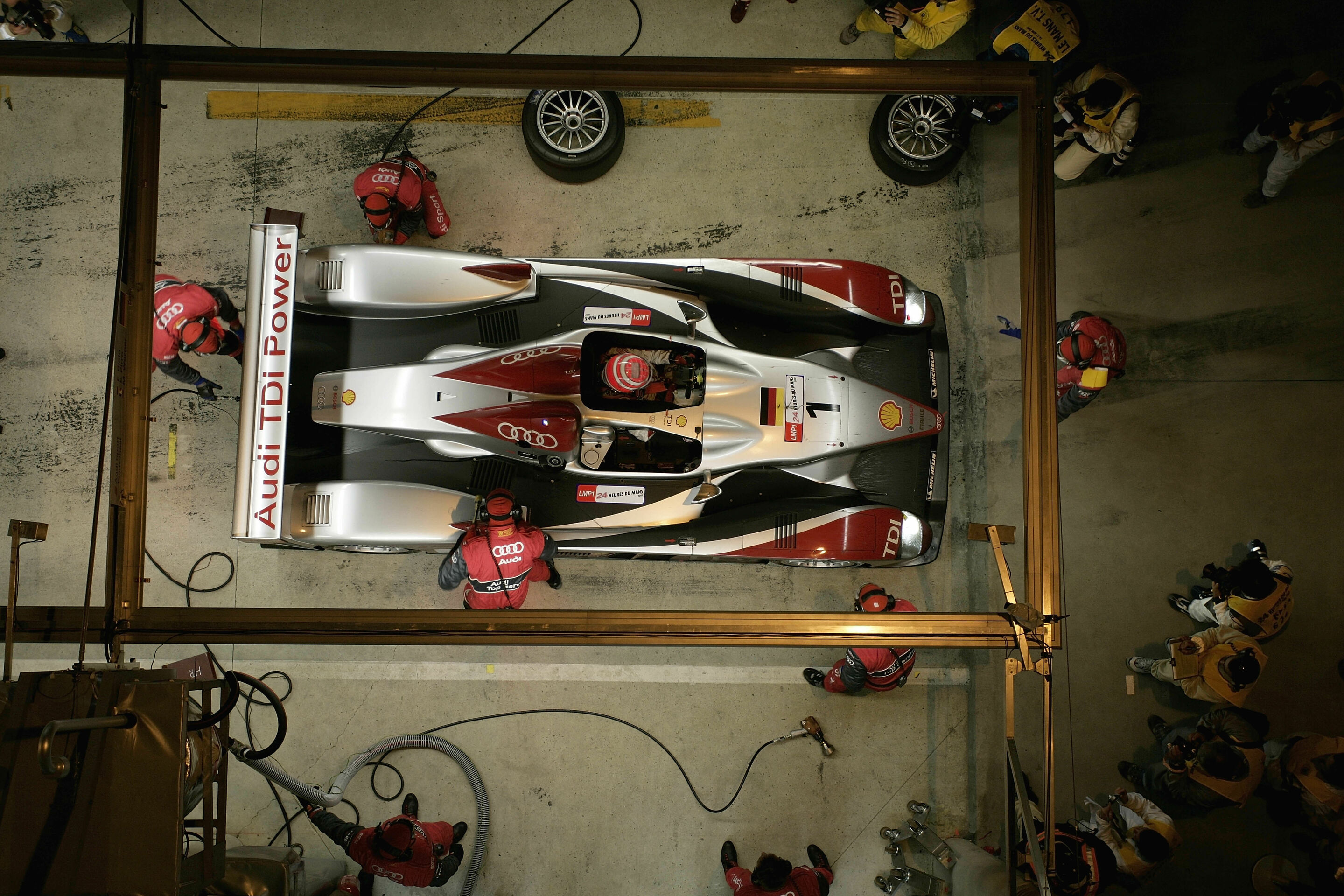Facts about Audi’s seventh Le Mans victory
- A record 250,920 spectators witness Audi’s latest triumph
- 5,600 kilometres completed without technical problems
- Demonstration laps at Goodwood and around the Norisring
Audi prevailed with TDI power for the second year in succession at the 24 Hours of Le Mans. For Audi, it was the seventh win from nine starts in the French long-distance classic. At the same time, Audi presented the German automobile industry with its 25th Le Mans victory. Allan McNish drives the Le Mans winning car at the “Festival of Speed” at Goodwood this coming weekend. The spectators at the Norisring can also see Audi’s revolutionary diesel sportscar in action: Frank Biela spools off several demonstration laps with the R10 TDI on Sunday at 1:10 p.m., just before the start of the DTM race.
Facts and figures about Audi’s latest victory at Le Mans:
250,920 spectators watched the 75th running of the 24 Hours of Le Mans “live” at trackside – a new record.
The victorious Audi R10 TDI at Le Mans had the chassis number 202. This car had already won the 12-hour race at Sebring (USA) in March, followed up that victory by completing another 12 hour test at Sebring and completed a 30-hour test at Paul Ricard (France) in April.
With its seventh win – from only nine starts – Audi jumped to third position in the Le Mans all-time winners list. Only Porsche (16) and Ferrari (9) have more Le Mans victories.
Emanuele Pirro mounted the podium at Le Mans for the ninth time in succession.
Frank Biela and Emanuele Pirro both celebrated their fifth win at Le Mans. As a result, they now hold third place in the all-time winners list together with Derek Bell and behind Tom Kristensen (seven wins) and Jacky Ickx (six). It was the third successive Le Mans win for Marco Werner.
The average age of the winning team was 43 – proof that experience is also needed at Le Mans.
It was the ninth Le Mans triumph for Reinhold Joest’s team. As result, it is by far the most successful Le Mans team.
Tyre partner Michelin celebrated its tenth successive Le Mans victory.
The winning car completed a total of 369 laps (eleven less than last year). This equates to a distance of 5,029.11 kilometres at an average speed of 209.152 kph.
Including the second qualifying session and warm-up, the V12 TDI engine in the rear of the triumphant R10 TDI covered more than 5,600 kilometres without a single technical problem.
During the race – apart from tyre changes – there were only three unscheduled pit stops for the winning car: The rear wing and rear bodywork had to be changed at 9:56 p.m. after a collision with a GT1 car. The R10 TDI returned to the pits a lap later because the tail light fuse had flicked out in the collision. At 6:23 a.m. the front bodywork section had to be changed after hitting a large rock.
The victorious Audi R10 TDI stopped at the pits a total of 36 times during the race. The tyres were changed and the fuel tank was refilled at the majority of the stops. The car only stood for 23 minutes and 25 seconds in the pits.
On average, the Audi drivers returned to the pits every 12 laps to refuel. Owing to the faster lap times, the average fuel consumption was 42.19 litres / 100 km of Shell V-Power Diesel.
The fastest race lap (3m 27.176s = 236.825 kph) was set by Allan McNish in the Audi R10 TDI with the start number 2 on Sunday morning at 5:39 a.m.
